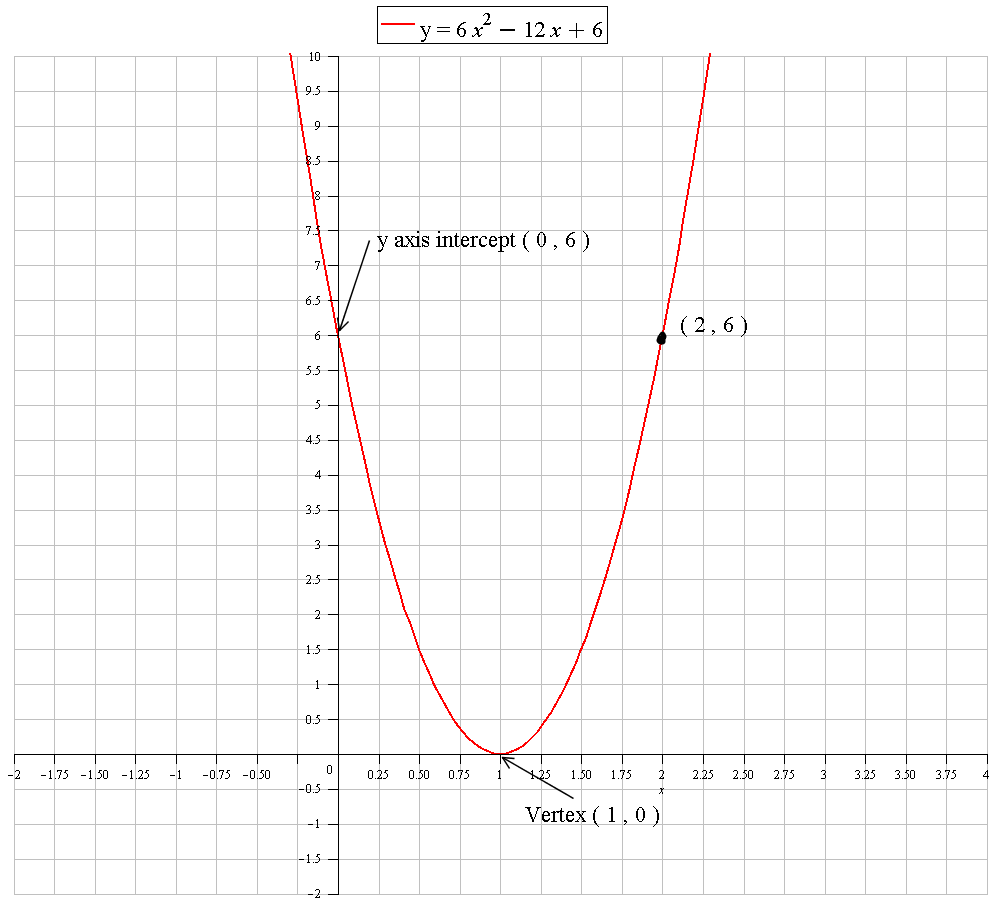Find the vertex form of a quadratic that passes through (2,6), has an x-int of 1 and a y-int of 6?
I really don't get it, and that's all the info that's available
I really don't get it, and that's all the info that's available
1 Answer
Explanation:
The vertex form of a quadratic equation of the form
Where:
From the given information it is possible to form three equation of the form:
and solve these simultaneously. These will involve squared quantities and messy equations, so an easier method would be to find the quadratic in the form:
This will be much simpler:
We know it passes through the point
We have an
Plugging in these values along with
Solving
Multiply
Substituting this in
So we now have all the coefficients and constants of
We still need this form:
It can be shown that:
So we have:
In vertex form we get:
This is its graph:


